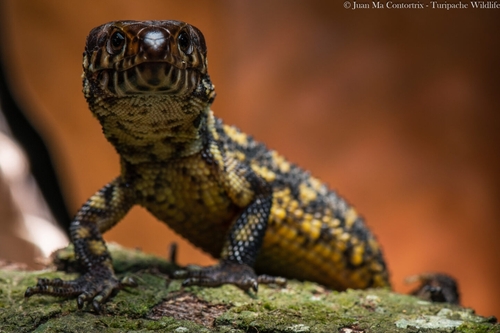
Yellow-spotted Night Lizard
The yellow-spotted night lizard, Lepidophyma flavimaculatum, is a nocturnal marvel of Central America's tropical forests. Its vibrant yellow spots provide perfect camouflage in the undergrowth, while its secretive nature and unique reproductive ability—giving birth to live young—set it apart from other lizards.
10-15 years
Lifespan
1.451 kg
Weight
Length: 6 - 13 cm
Size
Yellow, Dark, Brown
Color
1-2 years
Age of Sexual Maturity
Least Concern
Conservation Status
Unknown
Population Trend
Characteristics
Lepidophyma flavimaculatum, commonly known as the yellow-spotted night lizard, is a secretive reptile found in Central America. It thrives in humid, tropical forests and is known for its nocturnal behavior. The species features distinct yellow spots on a dark body, aiding in camouflage among leaf litter.
Distribution Range of the Yellow-spotted Night Lizard
Lepidophyma flavimaculatum, commonly known as the Yellow-spotted Night Lizard, is native to Central America. Its geographical distribution includes countries such as Mexico, Belize, Guatemala, Honduras, Nicaragua, and Costa Rica. The species is found in both the lowland and mountainous regions within these countries.
Yellow-spotted Night Lizard's Habitat
Environmental Conditions
The Yellow-spotted Night Lizard typically inhabits tropical and subtropical forests. It is often found in humid environments, thriving in areas with dense vegetation and leaf litter on the forest floor. The species is known to prefer regions with a warm and moist climate, which provides the necessary conditions for its survival.
Ecological Niche
Lepidophyma flavimaculatum occupies an ecological niche as a ground-dwelling lizard, primarily nocturnal in its activities. It plays a role in the ecosystem as both predator and prey. The lizard feeds on various invertebrates, contributing to insect population control, while also serving as prey for larger predators. Its adaptations to a nocturnal lifestyle include cryptic coloration that blends with the forest floor, aiding in camouflage.
Copyright @ Nature Style Limited. All Rights Reserved.
 English
English